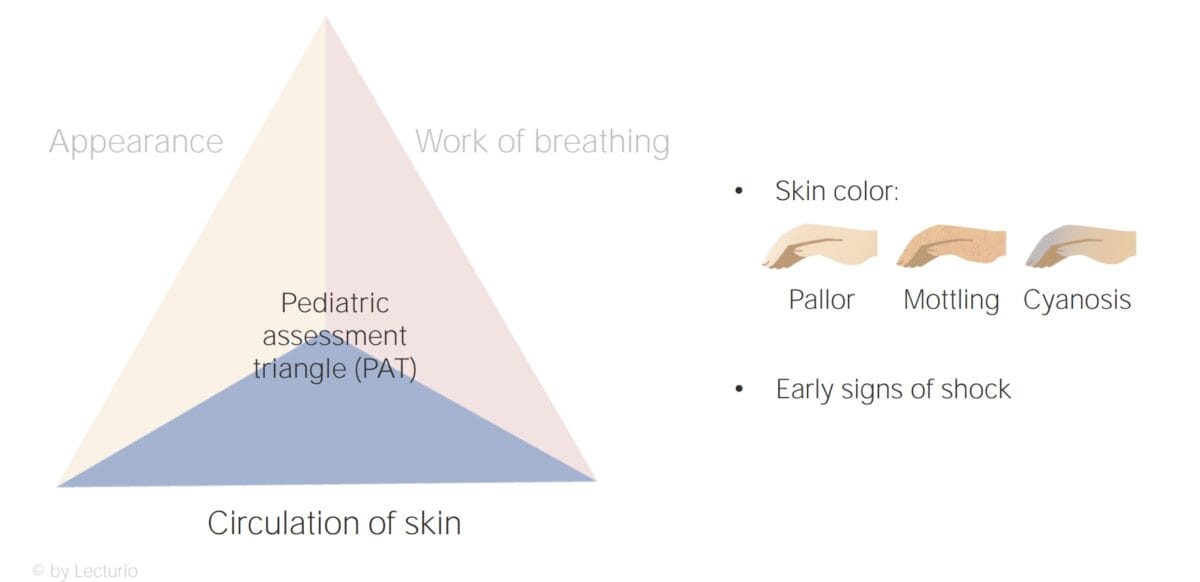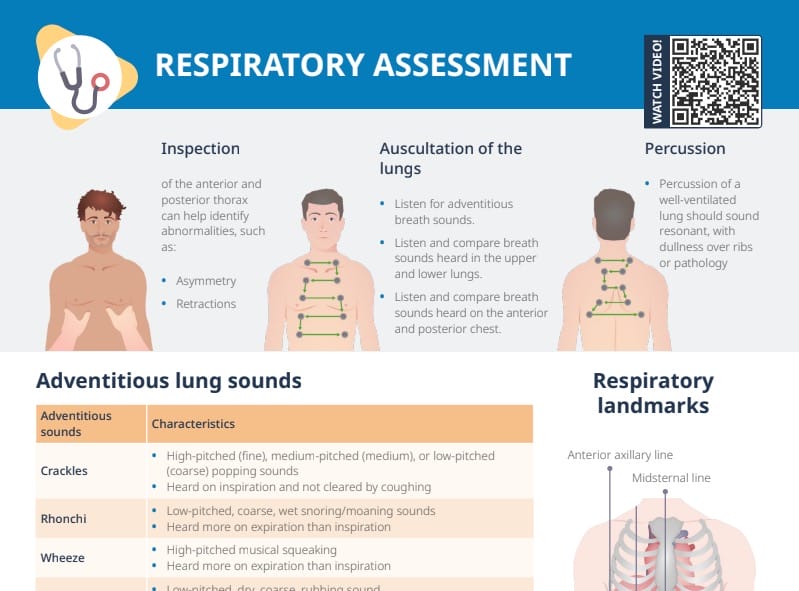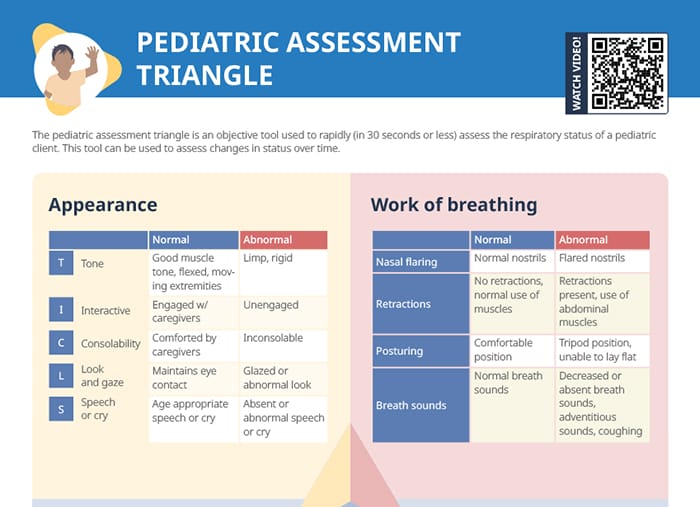What is the pediatric triangle of assessment (PAT)?
The pediatric assessment triangle is a tool that can be used to rapidly assess the respiratory status of a pediatric client, particularly to identify critically ill or injured children.
In emergency situations, the rapid assessment can help prioritize patients by identifying children at risk of decompensation. It is applicable across all pediatric age groups.
Components of the pediatric assessment triangle
The assessment triangle is based on 3 key observations: appearance, work of breathing, and circulation.
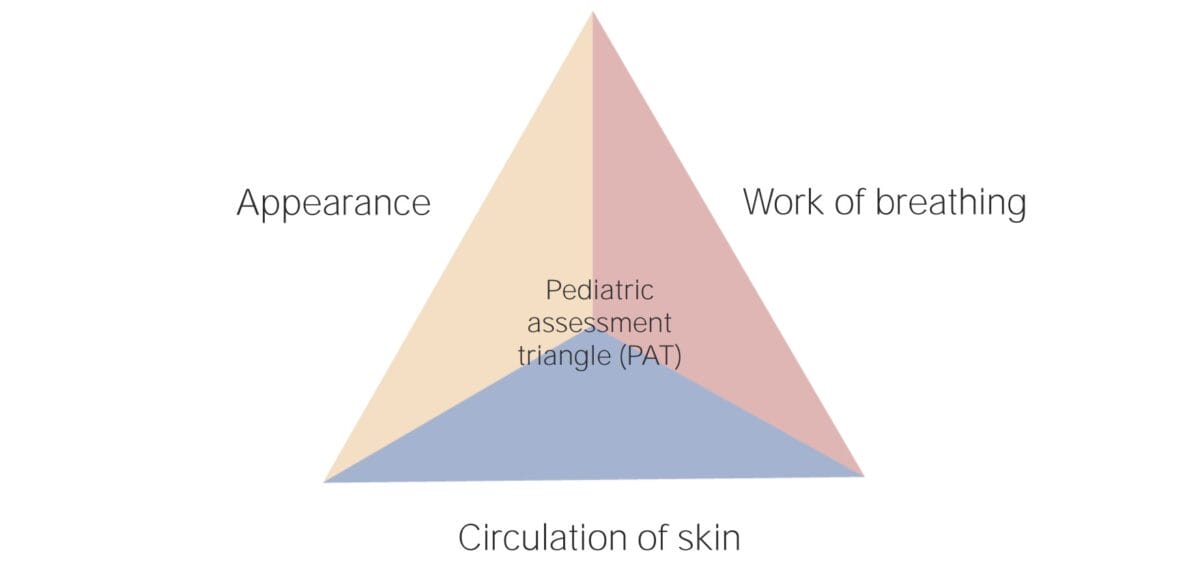
Appearance (TICLS)
The components of the appearance assessment have the acronym TICLS (pronounced and remembered as “tickles”):
- Tone
- Interactiveness
- Consolability
- Look and gaze
- Speech and cry
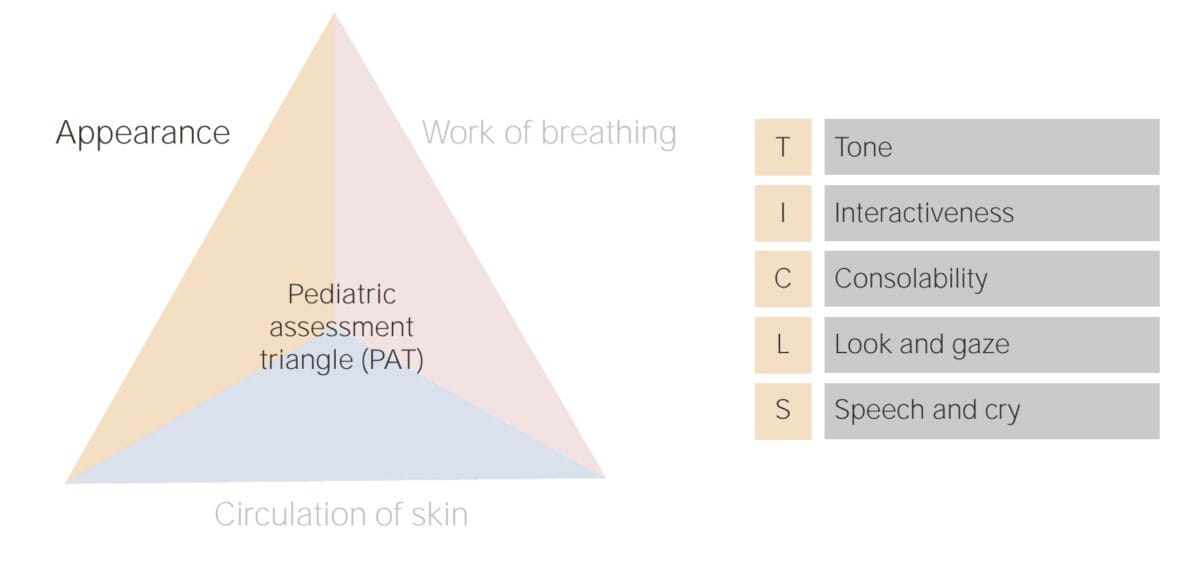
Work of breathing
Evaluating the work of breathing involves observing for signs of respiratory distress or failure:
- Nasal flaring (to maximize air flow)
- Retractions
- Posturing
- Breath sounds
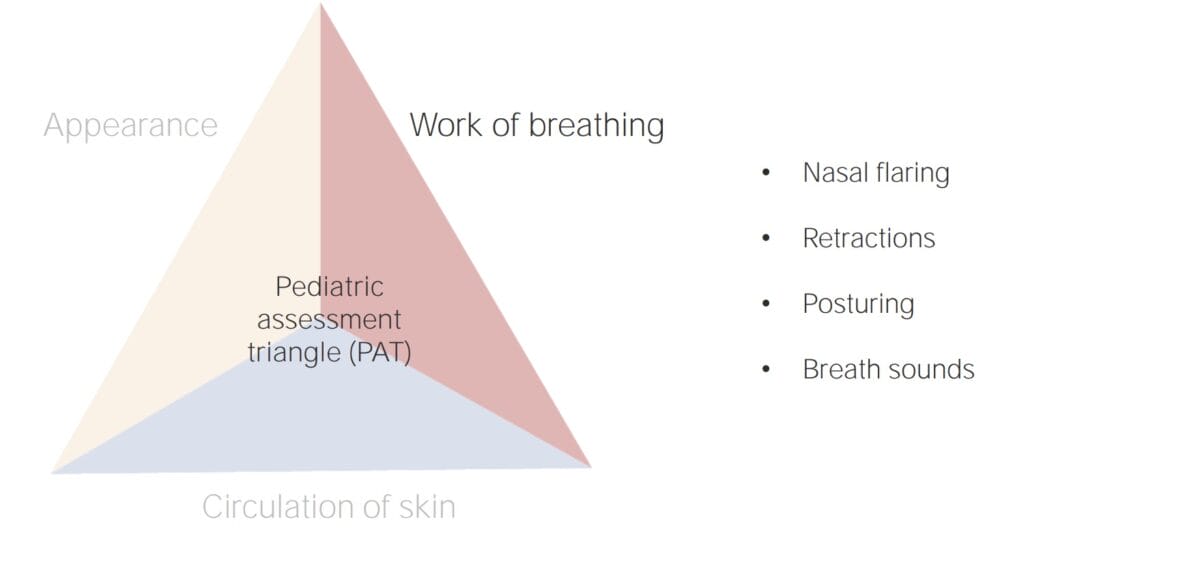
Circulation of skin
Assessing the child’s circulatory status involves checking for:
- Skin color (pallor, mottling, cyanosis)
- Early signs of shock
